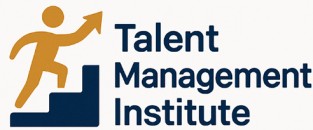
Understanding HRM Forecasting
Demystifying HRM Forecasting
In today's business landscape, human resource management (HRM) forecasting has become an essential tool for companies aiming to stay competitive. The demand for a more strategic approach in predicting workforce needs underscores the importance of forecasting in human resources. It enables organizations to plan and manage their talent pool effectively, ensuring alignment with business goals. Forecasting is crucial in understanding both the present and the future capabilities of a company's workforce. Such analysis involves reviewing current workforce data, assessing historical trends, and employing predictive analytics. This data-driven process aids in resource forecasting, enabling businesses to predict future workforce requirements with a higher degree of accuracy. It involves several techniques like demand forecasting and trend analysis. Effective workforce forecasting is much more than simply predicting when to hire more employees. It requires a comprehensive understanding of the company's available resources, its staffing needs, and its growth objectives. By conducting thorough resource planning, businesses can better allocate their human resources to meet both immediate and long-term objectives. The process also involves scenario planning, a vital forecasting method that helps organizations prepare for various potential future developments. These scenarios provide a framework for identifying gaps in current staffing and guide the decision-making process to bridge these gaps efficiently. To delve further into the essence of human resource roles versus talent advisor functions, visit this insightful article offered by the Talent Management Institute. Understanding the intricacies of HRM forecasting is just the beginning. It sets the stage for exploring key components and challenges, which are vital in refining the forecasting process for enhanced talent management.Key Components of HRM Forecasting
Exploring Core Elements of Workforce Forecasting
In the intricate arena of workforce planning, businesses seek to unlock the potential of their human resources. This necessitates a comprehensive understanding of the crucial components involved in talent forecasting, allowing companies to make informed decisions about their future staffing needs. The core elements that comprise effective HRM forecasting include predictive analytics, demand forecasting, and scenario planning.
Role of Historical Data and Trend Analysis
To predict future workforce requirements, organizations must rely on historical data and trend analysis. This process involves examining past staffing levels, business goals, and resource utilization to reveal patterns over time. By doing so, companies gain insights necessary for human resource forecasting to strategically align their workforce with anticipated demand, ensuring optimal resource planning and efficient use of talent.
Integration of Predictive Analytics
Predictive analytics play a pivotal role in workforce forecasting, offering a data-driven approach to human resource management. Through advanced forecasting techniques, organizations can predict future staffing needs more accurately, allowing them to address potential gaps and ensure they have the right talent available when needed. This alignment is essential for effective hiring and emphasizes the long-term strategy of matching employee capabilities with business demands.
Incorporating Business Goals in Resource Forecasting
The successful integration of HRM forecasting with broader business goals is critical for talent management. Companies must draw a direct line between workforce planning and strategic business objectives, ensuring that their talent pool supports and enhances corporate ambitions. By aligning forecasting efforts with business targets, firms can optimize their staffing processes, thereby fostering a dynamic and resilient workforce.
Future-proofing with Scenario Planning
Scenario planning offers a valuable foresight tool in talent management, helping businesses prepare for various potential future states. By identifying possible disruptions and considering their impacts, organizations can develop flexible strategies to navigate changes in workforce demand. Scenario planning adds a layer of resilience, enabling companies to adapt quickly to shifting market conditions and maintain competitive edge through effective resource management.
For more insights on how integrated corporate services contribute to talent management, explore this in-depth article. Understanding these key components assists businesses in efficiently managing workforce challenges, fostering sustainable growth and adaptability in an ever-changing landscape.
Challenges in HRM Forecasting
Addressing Forecasting Hurdles in Talent Management
Effective HRM forecasting undoubtedly plays a crucial role in talent management, aligning the workforce with organizational goals and objectives. However, it is not without its challenges. The following paragraphs delve into the complexities of forecasting and the hurdles one might encounter in their pursuit of a seamless talent management process. One prevalent challenge lies in the accuracy of data collection and analysis. Businesses rely heavily on historical data to predict future staffing requirements, which poses a challenge when data is incomplete or outdated. Ensuring the reliability and timeliness of data necessitates rigorous monitoring and a robust data management system. Employing accurate mapping can enhance the supply chain efficiency within talent management. Another common issue is the ever-changing business environment, which can disrupt demand forecasting efforts. Fluctuations in the market, evolving technology, and shifts in workforce demographics make it difficult to forecast resource needs accurately. Companies must remain adaptable, employing flexible forecasting techniques and scenario planning to mitigate these variables. Resistance to change also poses a significant barrier. When integrating new forecasting processes or tools, the existing workforce might resist change due to fear or uncertainty. Successful management involves clear communication and training to foster acceptance and support among employees. Moreover, aligning the HRM forecasting with the strategic goals of the company is a complex task. A disconnect between HR and business leaders can result in misaligned objectives and priorities. Establishing a collaborative framework where the HR department and business leaders work in tandem is essential for coherent resource planning and to meet business goals effectively. In conclusion, while HRM forecasting presents several challenges, understanding and addressing these hurdles is crucial for a successful talent management strategy. Organizations must strive towards a balanced approach that navigates the complexities while keeping a focus on predictive analytics, workforce planning, and data-driven decision-making to foster future growth.Tools and Techniques for Effective Forecasting
Adopting Data-Driven Forecasting Techniques
In the realm of HRM forecasting, data-driven forecasting techniques are pivotal. Companies use historical data to predict future workforce demand, allowing them to anticipate needs with greater accuracy. This process involves an analysis of current workforce metrics alongside business goals, ensuring alignment with the company's strategic objectives.
Harnessing Predictive Analytics
Predictive analytics play a crucial role in HRM forecasting, facilitating better resource planning and staffing management. By leveraging sophisticated tools, businesses can predict future trends and identify potential gaps in their workforce. This proactive approach aids in devising strategies to bridge these gaps, aligning talent management with business objectives effectively.
Implementing Scenario Planning
Scenario planning is another technique that empowers companies to prepare for various future possibilities. This involves creating multiple staffing scenarios based on potential changes in demand and market conditions. By considering these different scenarios, businesses can develop flexible hiring strategies that adapt to changes, ensuring optimal utilization of their human resources.
Considering Trend Analysis in Workforce Planning
Trend analysis is integral to understanding workforce dynamics over time. By examining patterns and changes in both internal and external environments, businesses gain insights necessary for effective resource forecasting. This knowledge supports the strategic alignment of talent management with evolving business needs.
The Role of Current Workforce Analysis
Assessing the current workforce is essential for successful HRM forecasting. Conducting a thorough gap analysis helps businesses identify discrepancies between existing skill sets and future staffing needs. This analysis lays the groundwork for targeted recruitment efforts and training programs aimed at enhancing employee capabilities, ultimately supporting comprehensive workforce planning.
Integrating HRM Forecasting with Talent Management
Aligning Forecasting with Talent Management
Integrating HRM forecasting with talent management is a strategic move that can significantly enhance a company's ability to meet its business goals. By aligning forecasting efforts with talent management strategies, organizations can ensure they have the right people in the right roles at the right time. This alignment is crucial for effective workforce planning and resource management.
Leveraging Predictive Analytics
Predictive analytics plays a pivotal role in this integration. By analyzing historical data and current workforce trends, companies can predict future staffing needs and address potential gaps. This data-driven approach allows for more accurate demand forecasting, enabling businesses to plan for future staffing requirements effectively.
Scenario Planning for Future Staffing
Scenario planning is another valuable tool in this process. By considering various future scenarios, organizations can prepare for different potential outcomes. This proactive approach helps in resource forecasting and ensures that the company is ready to adapt to changes in demand, whether they involve scaling up or down.
Conducting Gap Analysis
Gap analysis is essential in identifying discrepancies between the current workforce and future staffing needs. By understanding these gaps, businesses can develop targeted hiring and training programs to bridge them. This process not only supports effective talent management but also aligns with the company's long-term business objectives.
Continuous Process Improvement
Integrating HRM forecasting with talent management is not a one-time effort. It requires continuous process improvement and regular analysis to adapt to changing business environments. By consistently refining forecasting techniques and updating workforce planning strategies, companies can maintain a competitive edge in talent management.













